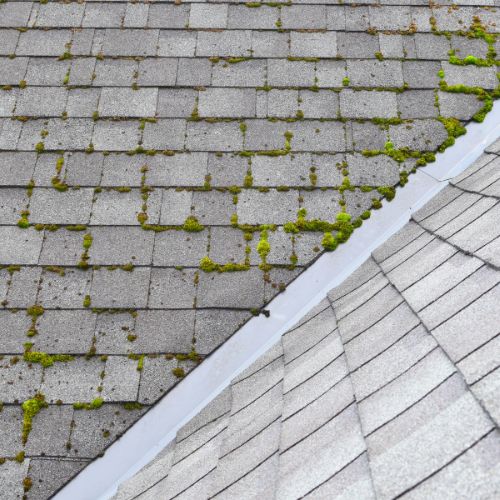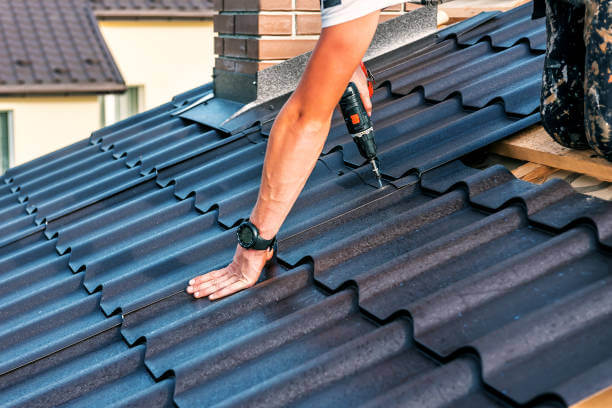Change Your Roofing with Keep Dry Roofing LLC's Expert Solutions
Change Your Roofing with Keep Dry Roofing LLC's Expert Solutions
Blog Article
Ultimate List for Examining the Condition of Your Roof Covering System and Identifying Potential Problems
By adhering to an extensive checklist customized to examine the different elements of your roof, you can acquire beneficial understandings right into its current state and preempt any kind of approaching problems. This aggressive strategy not just ensures the longevity of your roof yet additionally contributes to maintaining the structural integrity of your home.

Roofing Assessment Devices
When conducting a complete evaluation of a roof, making use of ideal roof covering inspection tools is necessary for exact evaluation and evaluation. These devices help in detecting prospective issues, examining the total problem of the roof covering, and figuring out the necessary maintenance or repairs needed. Among the key tools used in roof covering assessments is a dampness meter, which aids recognize locations of entraped moisture within the roofing system layers that can indicate leaks or water damages. Infrared thermography video cameras are additionally beneficial as they can find temperature level variants that may signify insulation issues or leaks not noticeable to the naked eye. Additionally, drones outfitted with high-resolution cameras supply bird's-eye views of the roofing, enabling inspectors to evaluate hard-to-reach areas safely.

In addition, an electronic video camera or mobile phone is necessary for recording the inspection procedure, capturing images of any type of damages or areas of worry for more assessment. Various other devices such as field glasses, roof probes, and safety and security equipment like harnesses and ladders are critical for a safe and thorough roofing assessment. By using these devices efficiently, examiners can conduct thorough analyses, recognize concerns quickly, and advise proper options to preserve the roof covering's stability.
Outside Roofing Assessment
To thoroughly evaluate the condition of a roof system, an outside roof covering analysis is necessary to inspect the surface area for indicators of wear, damage, or potential concerns. During an outside roofing evaluation, it is critical to start by examining the roof shingles or roof covering material. Look for any missing out on, broken, or curled tiles as they can suggest water infiltration and prospective leakages. Inspect for moss or algae development, which can catch wetness and cause wear and tear over time. Furthermore, evaluate the blinking around smokeshafts, vents, and skylights to guarantee they are secure and in great problem to avoid water seepage.

Evaluate the general cleanliness of the roof covering, as debris buildup can maintain dampness and accelerate roof covering damage. By carrying out a thorough outside roofing system assessment, house owners can recognize and resolve possible issues before they escalate into pricey fixings.
Inside Ceiling Evaluation
Upon going into the indoor room, a detailed analysis of the ceiling is imperative to determine any indications of water damages, leaks, or architectural concerns. Begin by aesthetically checking the ceiling for any discoloration, drooping, or peeling off paint, as these might show water infiltration from the roofing system. Any type of moldy odors or dampness in the air should also increase problems concerning prospective roofing system issues.
Attic Exam
The attic room offers as an important element of useful link the roof covering system, offering insights right into possible concerns that may not be noticeable from the exterior helpful hints or interior of the home. Throughout the attic room examination, it is important to examine for indications of water damage, such as water discolorations, mold growth, or rotting wood, which might indicate a leak in the roofing system. Consistently examining the attic can aid recognize potential roof covering problems early on, enabling for timely repair work and maintenance to lengthen the life expectancy of the roof covering.
Dealing With Usual Roof Covering Issues
One of the most regular issues property owners deal with is a dripping roofing system, commonly triggered by harmed or missing roof shingles, improper installment, or shabby blinking. One more usual issue is roofing system ventilation concerns, which can lead to excess heat and moisture build-up in the attic room, causing early degeneration of the roof covering products. Furthermore, the build-up of particles such as leaves, branches, or snow on the roof can obstruct drainage systems and lead to water merging, which might ultimately cause roofing system leakages or architectural damage.
Final Thought
In final thought, a thorough analysis of your roof is vital to determine prospective issues and ensure the total problem of your roof covering. By making use of the ideal tools and conducting attic room, interior, and exterior inspections, common roofing problems can be addressed quickly. Normal maintenance and timely repairs can aid stop significant damages and prolong the life-span of your roofing system.
One of the key devices used in roofing system assessments is a moisture meter, which assists identify locations of entraped moisture within the roofing layers that can suggest leaks or water damages. Other devices such as binoculars, roofing system probes, and safety and security devices like ladders and harnesses are critical for a extensive and risk-free roof covering evaluation.To extensively evaluate the problem of a roof covering system, an exterior roofing check this analysis is essential to evaluate the surface for signs of wear, damages, or prospective issues. Analyze the overall cleanliness of the roof, as particles accumulation can keep wetness and speed up roofing deterioration. Keep Dry Roofing LLC. Additionally, the build-up of particles such as fallen leaves, branches, or snow on the roof covering can block water drainage systems and lead to water pooling, which might at some point trigger roof leaks or structural damage
Report this page